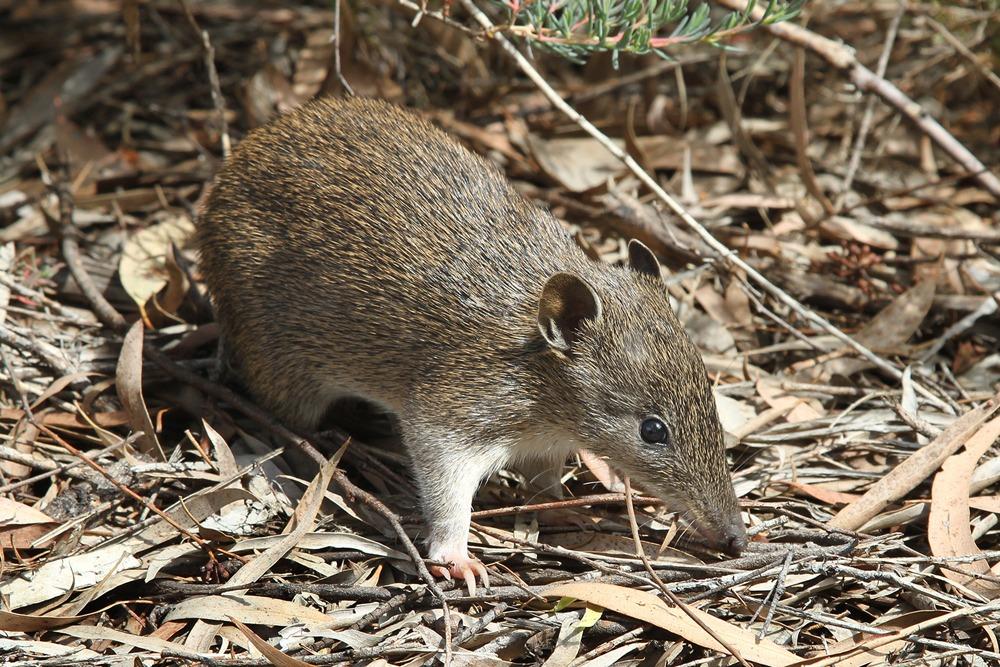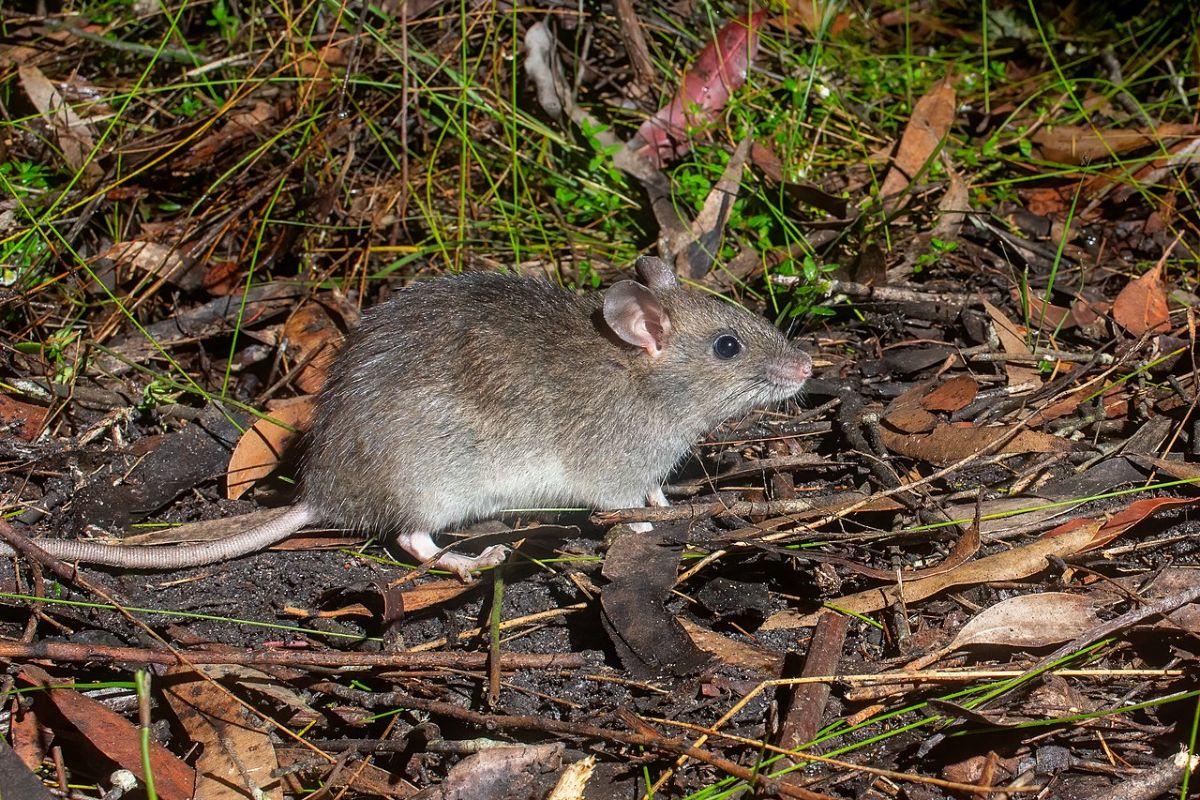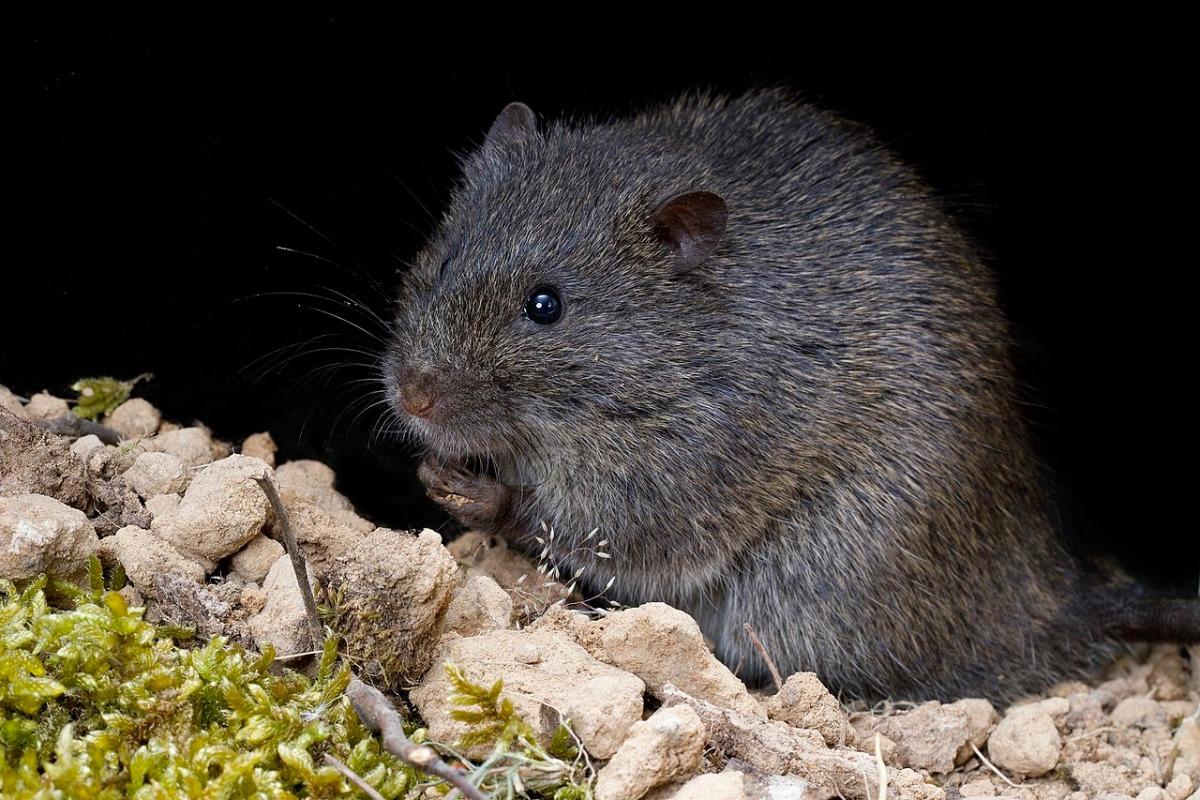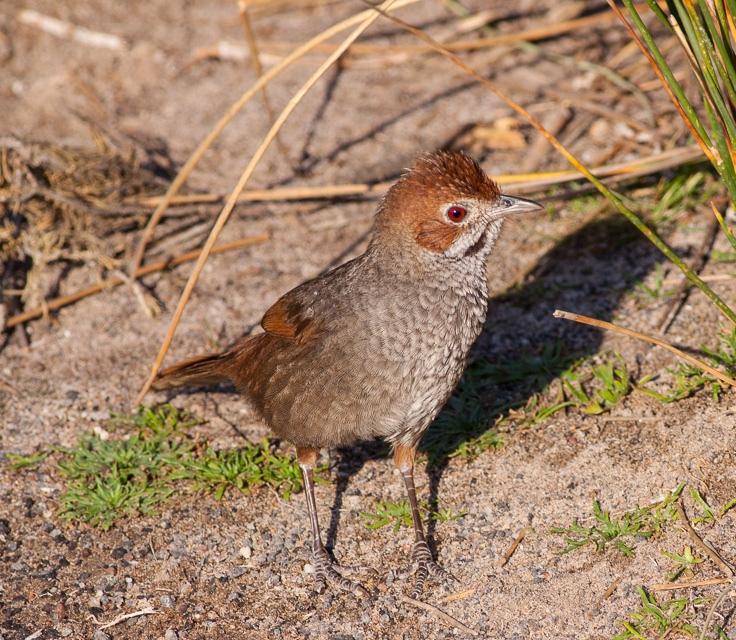Southern Brown Bandicoot (threatened species)

Southern Brown Bandicoot
The Southern Brown Bandicoot Isoodon obesulus is a medium sized ground dwelling marsupial with a long tapering snout, a naked nose, a compact body and a short tail. They have an average body length of 33 cm for males and 30 cm for females, with an average tail length of 11.3 and 12.4 cm for females and males respectively. The pouch in females opens to the rear, and contains eight teats arranged in a partial circle.
By day, the Southern Brown Bandicoot sleeps in a nest made from grasses and other plant material, and at night emerges to feed on a variety of insects, earthworms, fungi, fruits and other plants, often digging distinctive cone-shaped holes.
The Southern Brown Bandicoot can also be occasionally seen on the cliff top walk at Aireys Inlet.
The distribution of the Southern Brown Bandicoot has decreased significantly since European settlement mainly as a result of vegetation clearing, introduced foxes and cats, and changes to the frequency of fires.
Photo by John O’Neill






